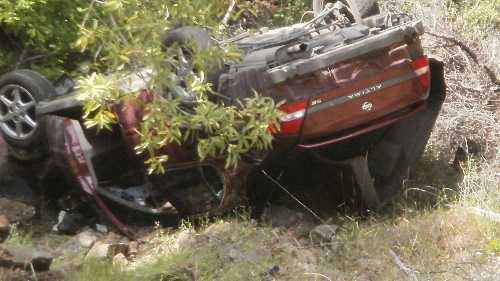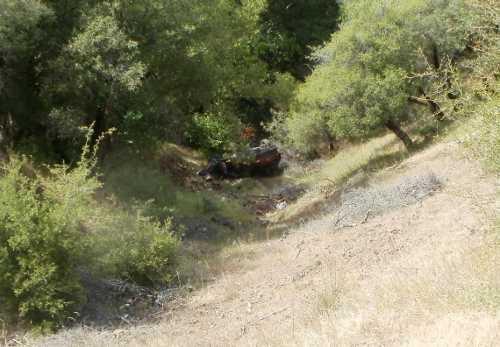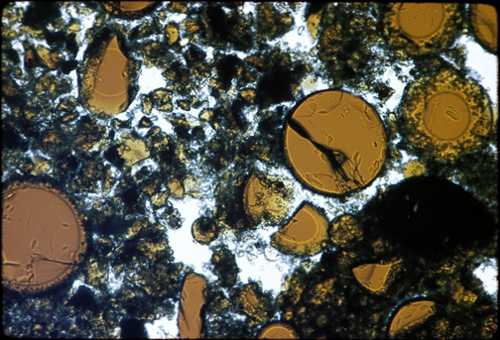- Elizabeth Larson
- Posted On
Man sent to prison for 68 years to be considered for medical release as result of Senate bill

LAKE COUNTY, Calif. – A former Lakeport man sent to prison for 68 years for a home invasion robbery and previous felony strikes will go before the Board of Parole Hearings next month for a hearing to determine if he is eligible for a medical release from prison.
Craig Alvin Lemke, 48, will appear before the parole board on June 15 at Pleasant Valley State Prison near Coalinga, where he is serving his sentence, according to the California Department of Corrections and Rehabilitation.
Lemke is one of several inmates up for medical parole, an issue set in motion by SB 1399, authored by state Sen. Mark Leno (D-San Francisco).
The bill, passed by the Legislature last year and signed by then-Gov. Arnold Schwarzenegger in September 2010, is intended to reduce the skyrocketing costs of health care for prisoners.
In a statement released last August, Leno's office said the bill “allows for the medical parole of those inmates who are severely incapacitated and no longer pose a threat to public safety.”
The bill did not offer medical parole eligibility to prisoners sentenced to death or life without the possibility of parole.
Luis Patino, a state corrections spokesman, said inmates like Lemke who are being considered for the medical release are eligible due to “dire” health conditions.
Prisoners considered for release, Patino added, are no longer considered dangerous to their communities, and are severely incapacitated or bedridden.
“They have to be that severe just to be eligible to be considered,” he said.
In most cases, the inmates up for consideration are in hospitals and will remain there, Patino said.
Medical parolees would remain under parole supervision and would be eligible for federal financial assistance to cover medical expenses, “and this burden would no longer fall entirely on California taxpayers,” according to Leno's statement.
The bill was anticipated to save California taxpayers $200 million, with no associated public safety risk, according to Leno.
Leno cited figures from the state's 2009-10 fiscal year, in which California taxpayers reportedly spent nearly $2 billion on the health care needs of state prisoners.
Leno's office said that a state audit found that in a single year 1,175 inmates accounted for 39 percent of specialty health care spending, totaling more than $185 million.
Patino said state prison doctors determine which prisoners are eligible to be considered for medical release.
The prisoners have to be watched by two guards 24 hours a day, said Patino. As prisoners, they're not available for Medicare, but on parole they would be eligible for some federal benefits to cover their costs.
The first of several scheduled medical parole cases came up last week when the Board of Parole Hearings considered the case of 42-year-old Steven Martinez.
Martinez, who became a quadriplegic following a 2001 prison knife attack, had been sentenced to prison for 150 years for a violent 1998 kidnap, attack and rape of a San Diego woman, according to a Los Angeles Times story by reporter Tony Perry (www.latimes.com/news/local/la-me-prisoners-20110530,0,78103.story).
It's up to the Board of Parole Hearings to decide of such releases are truly safe. In the case of Martinez, who the board turned down for the parole, Patino said that Martinez had made threats against his nurses.
Due to the federal Health Insurance Portability and Accountability Act of 1996 (HIPAA), which protects patient confidentiality, Patino said specifics about Lemke's medical issues were not available for release, although they may be discussed publicly at the June 15 hearing.
Lake County Chief Deputy District Attorney Richard Hinchcliff, who will travel to the hearing to argue against Lemke's release, said he hasn't received any of the details about the medical justifications for Lemke's proposed release, either.
“They're saying he needs 24-hour care for something but they don't say what,” said Hinchcliff.
Patino said the details of Martinez's cases were available to be made public because he had previously been considered – and denied – for “compassionate” release due to his condition.
An 'extremely violent' individual
Lake County Superior Court Judge Stephen Hedstrom sentenced Lemke to 68 years to life in November 2007 for a home invasion robbery of an elderly Lower Lake couple's home in February 2006, as Lake County News has reported.
In that February 2006 case, Lemke and an accomplice allegedly broke into a home, tied up an 89-year-old man and his 70-year-old wife with duct tape and put them on the floor before taking money, jewelry, firearms and ammunition, according to the original report from the Lake County Sheriff's Office. Neither victim was seriously injured.
The following month, the sheriff's office reported arresting Lemke – in jail on other felonies – on charges related to the home invasion robbery.
Hedstrom sentenced Lemke to the 68-year sentence for two counts of first degree robbery, first degree burglary, elder theft, two counts of false imprisonment of an elderly person and grand theft of firearms, with the previous strikes doubling the sentence.
One of the previous strike cases had involved a similar home invasion robbery case in 1995 in which Lemke bound a man and his 15-year-old son with duct tape and robbed them.
Hinchcliff said he was angered by the decision to consider Lemke for medical release after only four years into a 68-year sentence.
He called Lemke an “extremely violent person,” and pointed to his previous convictions.
California Department of Corrections and Rehabilitation records on Lemke show that before his 2007 conviction he had been sentenced to prison terms on weapons charges in 1986, burglary in 1990 and the 1995 home invasion robbery.
Pointing to the Martinez case, Patino said of Lemke that, just because he's being considered doesn't mean he'll receive the medical parole.
“The Board of Parole Hearings is obviously taking it very seriously,” Patino said.
So is Hinchcliff, who doesn't find the justification of saving the state money and trouble worth risking Lemke's release.
“I'm going to tell them I don't care how much trouble it is,” Hinchcliff said.
E-mail Elizabeth Larson at This email address is being protected from spambots. You need JavaScript enabled to view it. . Follow Lake County News on Twitter at http://twitter.com/LakeCoNews , on Facebook at http://www.facebook.com/pages/Lake-County-News/143156775604?ref=mf , on Tumblr at http://lakeconews.tumblr.com/ and on YouTube at http://www.youtube.com/user/LakeCoNews .
















